Contents
- Approach to the treatment of adnexitis with antibiotics
- Overview of the most popular antibiotics for adnexitis
- Why antibiotics for adnexitis are required?
- Additional methods of treatment of acute adnexitis
- What antibiotics can be taken with adnexitis during pregnancy?
- Indications for surgical treatment of adnexitis
The causative agents of adnexitis are pathogenic bacteria that have penetrated the ovaries or fallopian tubes. They enter the body sexually or are brought with the bloodstream from other foci of infection. For effective treatment of the inflammatory process, broad-spectrum antibacterial drugs are prescribed.
Approach to the treatment of adnexitis with antibiotics
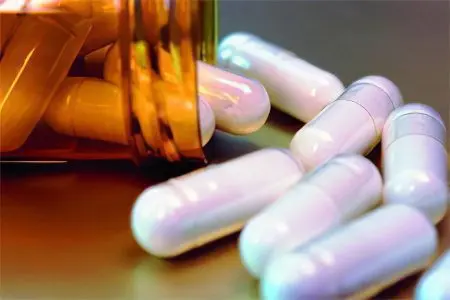
It is very important when prescribing antibacterial agents to avoid the resistance of pathogenic bacteria to them. The wrong choice of drugs can delay the full recovery from adnexitis or lead to its transition to a chronic form.
Rules for choosing antibiotics:
Before starting treatment, it is necessary to establish the exact cause of the infection. Different types of pathogenic bacteria react differently to antibacterial agents.
Before choosing a medicine, the doctor prescribes a bacterial analysis of the flora for sensitivity to antibiotics.
It is required to take into account the features of the course of the inflammatory process. At the beginning of the disease, a woman needs emergency help, after determining the type of pathogen, the prescribed treatment is corrected.
Before treating the chronic form of adnexitis, it is necessary to establish the sensitivity of the microflora to antibiotics, and only then select the right drug, since in this case the infection is very often mixed.
The choice of dosage form depends on the stage of the disease. The acute course of adnexitis is treated with injections of antibacterial drugs. After stabilization of the patient’s condition and restoration of the blood count, oral medication is recommended. Treatment of the chronic form of the disease immediately begins with taking pills.
Antibacterial therapy is supplemented in severe and advanced cases by the appointment of vaginal suppositories and physiotherapy.
The course of antibiotic treatment is usually 10-14 days. It is unacceptable to interrupt even after a significant improvement in well-being and after the symptoms of the disease have already disappeared. Without consulting the attending physician, it is impossible to spontaneously change drugs.
Overview of the most popular antibiotics for adnexitis
Antibiotics used for adnexitis have both positive and negative properties.
Azithromycin
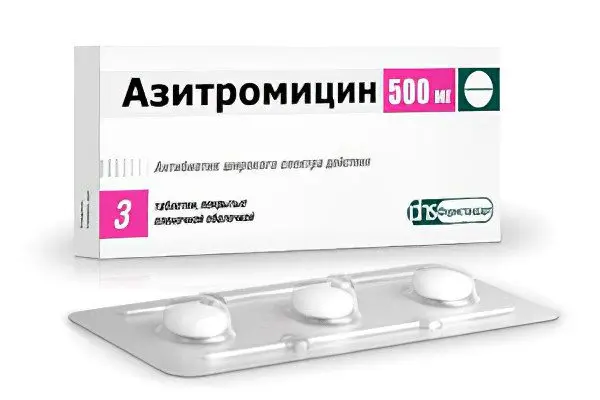
Belongs to the group of macrolides, effective against most bacteria that cause adnexitis. The duration of the course of treatment depends on the type of pathogen and varies from one day to 1,5 weeks.
Advantages of using Azithromycin:
Effective in fighting bacterial infection;
Well tolerated by patients;
Side effects occur very rarely and quickly disappear when the drug is discontinued;
Can be used with restrictions during pregnancy;
Applicable in the treatment of adnexitis caused by atypical intracellular pathogens such as chlamydia and mycoplasma;
Quickly creates a high concentration in body tissues and retains it for a long time;
Does not decompose in the acidic environment of the stomach, does not disturb the motility of the gastrointestinal tract;
Increases the sensitivity of resistant microbes to the action of other antibiotics;
It has a post-antibiotic effect, so it can be used in short courses.
Cons – when used in high doses, the drug can cause:
diarrhea
visual impairment;
Lymphocytopenia;
Nausea and vomiting.
Doxycycline
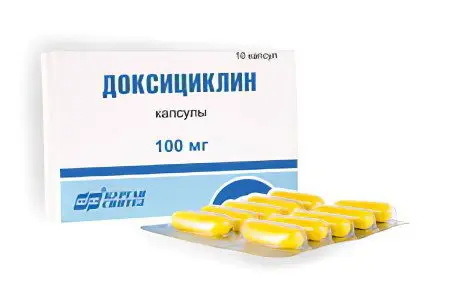
Belongs to the group of tetracyclines, is used against gram-negative bacteria and opportunistic flora (E. coli, enterococcus). For the treatment of adnexitis, a combination of Doxycycline with Gentamicin is used. The course of treatment is 14 days (2 times a day for 0,2 g).
Benefits of using Doxycycline:
The drug is very cheap (about 20 rubles);
Perfectly absorbed;
Possesses high therapeutic activity;
Works regardless of food intake.
Cons:
Not applicable during pregnancy and lactation;
May provoke headache, dizziness, itching, skin rash, dermatitis, disruption of the digestive system;
Requires drinking a whole glass of water, very often causes nausea and vomiting after taking;
When combined with retinol, it increases intracranial pressure.
Augmentin
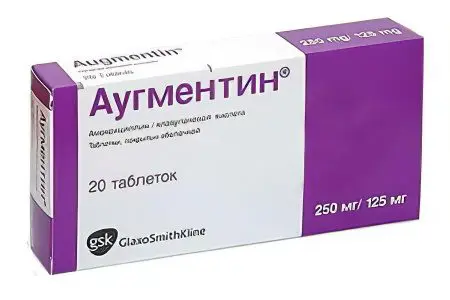
Belongs to the group of protected aminopenicillins, contains a combination of amoxicillin and clavulanic acid. The course of treatment lasts from 5 to 21 days, depending on the type of pathogen.
Advantages of using Augmentin:
Effective against a wide range of pathogens – gram-negative and gram-positive aerobic bacteria;
For the treatment of adnexitis, various forms of the drug can be used (injections, tablets, suspension);
Possesses the prolonged action;
Allowed during breastfeeding and (in rare cases) in the last trimester of pregnancy.
Cons:
Contraindicated in liver diseases, hypersensitivity to penicillins;
May cause thrush, diarrhea, nausea and vomiting;
In case of an overdose, disturbances in the functioning of the gastrointestinal tract and water-salt balance occur.
Cyprolet
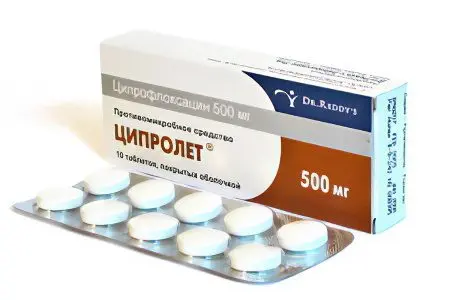
Belongs to the group of fluoroquinolones, the active substance is ciprofloxacin, effective as a remedy against gram-positive and gram-negative bacteria, as well as against opportunistic and anaerobic microbes. The course of treatment with Tsiprolet takes 10-14 days, the dosage is 2 g 0,5 times a day.
The advantages of using the drug:
Effective even against protozoa (Trichomonas, Giardia, amoeba) and anaerobic bacteria;
Quickly and well absorbed in the digestive tract;
Does not disturb the balance of the microflora of the vagina.
Cons:
Not used during pregnancy and lactation;
It has a large number of contraindications and side effects;
In case of an overdose, convulsions and disturbances in the functioning of the urinary system are possible;
When interacting with ultraviolet rays, the development of photosensitivity is not excluded.
Nolicin
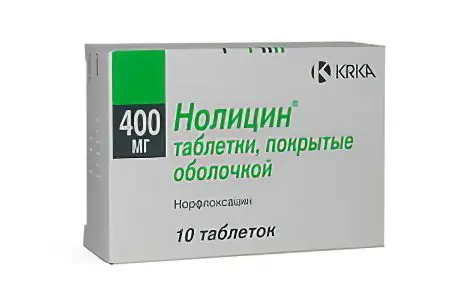
The main active ingredient of the drug is norfloxacin, which destabilizes the DNA of pathogenic microorganisms and thereby causes their death. Nolicin is a specific drug for the treatment of pathologies of the genitourinary system.
Pros of using Nolicin:
Rapidly absorbed in the digestive system;
Has a long antimicrobial effect;
Has a low cost.
Cons:
Do not use during pregnancy;
Can cause atherosclerotic changes in the vessels of the brain;
Can provoke an allergic reaction;
Side effects include kidney dysfunction, nausea, vomiting, loss of appetite,
When combined with alcohol, it can cause liver dysfunction.
Gentamicin
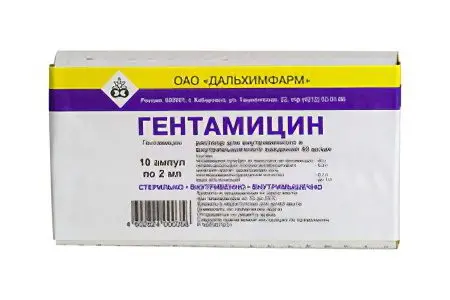
The drug from the group of aminoglycosides, is most effective against aerobic gram-negative bacteria. Acts on the cytoplasm of microbial cells. Useless against anaerobes and protozoa. It is used in the form of a solution for injection and in the form of tablets.
Benefits of using Gentamicin:
Microbial resistance to the drug develops slowly;
The drug is absorbed quickly, in full;
The medicine is offered to consumers at a low price.
Cons:
Not used during pregnancy and lactation;
Sometimes there is pain during insertion;
With prolonged use, nephrotoxicity is observed;
In case of an overdose, there is a reduced neuromuscular conduction, complicated by respiratory arrest;
When taking the drug, nausea, vomiting, drowsiness, hearing loss, and an allergic reaction may occur.
Sumamed
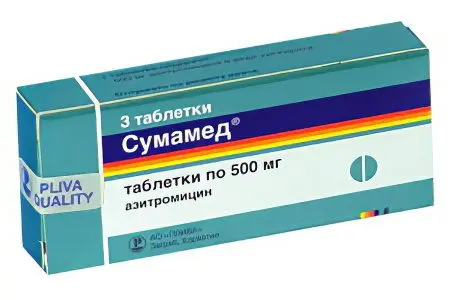
The main active ingredient of the drug is azithromycin dihydrate. Sumamed is a bacteriostatic antibiotic from the group of azalide macrolides. The drug disrupts the synthesis of protein cells of pathogenic bacteria and thereby stops their growth and reproduction. Sumamed is active against intracellular pathogens and many gram-positive and gram-negative bacteria.
Advantages of using Sumamed:
Rapidly absorbed and distributed in the body;
Easily penetrates through cell membranes, concentrates in the focus of infection;
It can be used in short-term courses of 1-3 days with a single dose of the drug during the day.
Cons:
Over time, bacteria develop resistance to the drug;
It has a large number of side effects – disorders of the nervous, digestive and cardiovascular systems, organs of vision and hearing, liver function and the hematopoietic system, allergic manifestations;
In case of overdose, short-term hearing loss, diarrhea, nausea and vomiting are noted.
Why antibiotics for adnexitis are required?
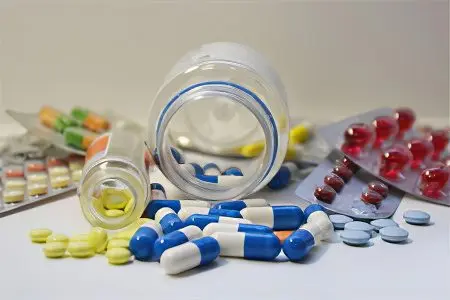
The course of adnexitis can be complicated by infertility, the occurrence of an ectopic pregnancy, and the development of an adhesive process. Adhesions in the pelvic organs lead to congestion due to a deterioration in the blood supply to the reproductive system, to the appearance of frequent pains that violate the harmony of intimate relationships.
The high rate of infection, the severity and frequency of complications require the mandatory use of antibacterial agents. Independent use of antibiotics and suppositories with an antimicrobial effect is unacceptable. Only a doctor can take into account the characteristics of the disease, the symptoms of the inflammatory process and prescribe the most effective antibacterial agent for the relief of pain and temperature.
If adnexitis is caused by a sexually transmitted infection, the woman’s partner also needs to be examined and treated.
Additional methods of treatment of acute adnexitis

Treatment with antibiotics is always combined with detoxification of the body from the waste products of microorganisms.
Methods of additional treatment:
Infusion of solutions of glucose, gemodez, reopoliglyukin, physiological solutions and protein preparations;
Use of analgesics;
The introduction of suppositories with proteolytic and anti-inflammatory components;
Physiotherapy – electrophoresis with copper, magnesium, calcium;
Spa treatment.
What antibiotics can be taken with adnexitis during pregnancy?

In the treatment of adnexitis in women expecting the birth of a child, the following groups of antibacterial drugs are excluded:
Lincosamide (Clindamycin);
Fluoroquinolones (Ciprofloxacin, Ofloxacin);
Tetracycline (Doxycycline);
Aminoglycosides (Gentamicin).
Since Metronidazole is included in many adnexitis treatment regimens, it must be remembered that it is forbidden to take it in the first three months of pregnancy. In the treatment of inflammation of the appendages in the 2nd and 3rd trimester, this drug is prescribed only by the decision of the doctor.
With adnexitis caused by chlamydia, the following antibiotics are used:
Erythromycin;
Josamycin;
Spiramycin.
Azithromycin.
As an alternative to the above drugs, Amoxicillin is chosen.
Indications for surgical treatment of adnexitis

In difficult cases of the course of adnexitis, there may be indications for surgical intervention:
Suspicion of a cyst or tumor of the ovary;
The development of a purulent process (ovarian abscess, tubo-ovarian abscess, pyosalpinx);
Changes in the anatomy and normal functioning of the appendages;
Lack of effect from drug therapy;
The combination of a chronic form of adnexitis with endometriosis;
Extensive adhesive process with pain syndrome.
At the initial stages of the disease, diagnostic laparoscopy is used with the treatment of the abdominal cavity with antiseptic solutions. If the course of adnexitis is complicated by an adhesive or purulent process, the presence of cysts and tumors of the ovaries, uterine myoma, an extensive surgical intervention is performed. The risk of infertility remains even after the correct restoration of tubal patency and elimination of the adhesive process.









